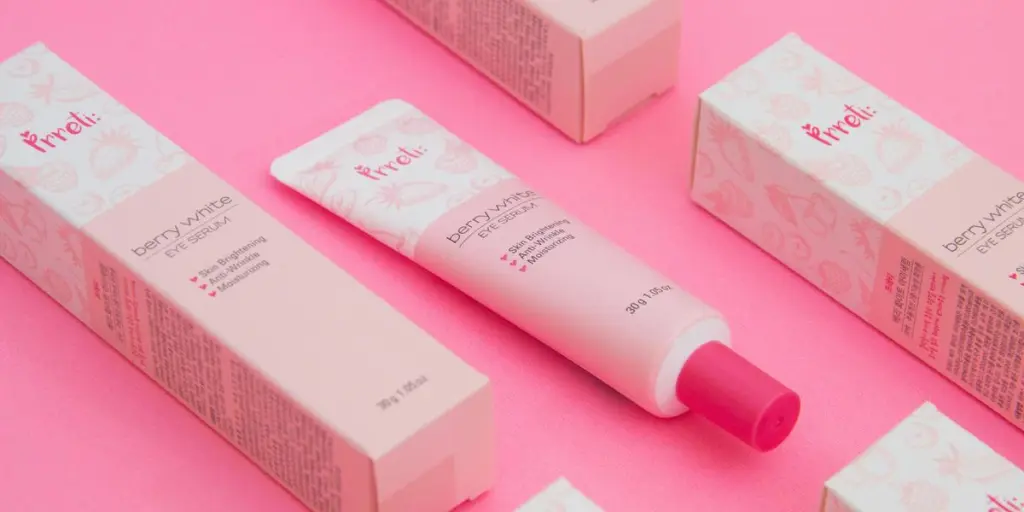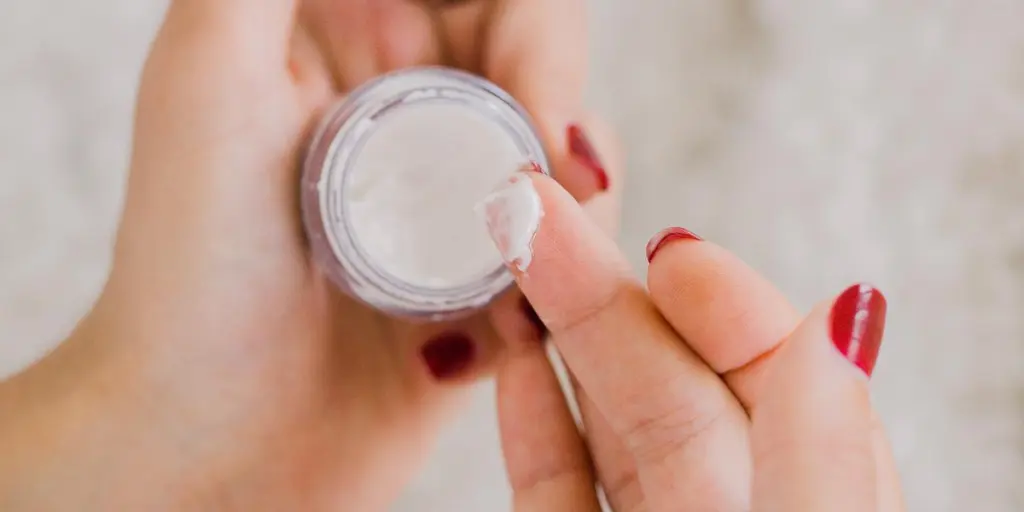In 2025, the beauty and personal care industry is witnessing a significant surge in the demand for anti-pigmentation creams. This trend is driven by an increasing awareness of skin health, the desire for an even skin tone, and the influence of social media. As consumers become more informed about the benefits of these products, the market potential for anti-pigmentation creams continues to grow, presenting lucrative opportunities for business buyers, including retailers and wholesalers.
Table of Contents:
– Understanding Anti-Pigmentation Creams and Their Market Potential
– Exploring Popular Types of Anti-Pigmentation Creams
– Addressing Consumer Pain Points with Effective Solutions
– Innovations and New Products in the Anti-Pigmentation Market
– Key Factors to Consider When Sourcing Anti-Pigmentation Creams
– Final Thoughts on Navigating the Anti-Pigmentation Cream Market
Understanding Anti-Pigmentation Creams and Their Market Potential

What Are Anti-Pigmentation Creams and Why Are They Trending?
Anti-pigmentation creams are specialized skincare products designed to reduce dark spots, hyperpigmentation, and uneven skin tone. These creams often contain active ingredients such as vitamin C, niacinamide, and hydroquinone, which work to lighten dark patches and promote a more uniform complexion. The rising popularity of these products can be attributed to the growing consumer focus on achieving flawless skin and the increasing prevalence of skin pigmentation issues caused by factors such as sun exposure, aging, and hormonal changes.
Social Media Buzz: Hashtags and Broader Trend Topics
The influence of social media cannot be overstated when it comes to the popularity of anti-pigmentation creams. Platforms like Instagram and TikTok are abuzz with hashtags such as #FlawlessSkin, #Hyperpigmentation, and #SkincareRoutine, which have garnered millions of posts and views. These hashtags reflect a broader trend towards skincare transparency and the sharing of personal skincare journeys. Influencers and dermatologists frequently highlight the effectiveness of anti-pigmentation creams, further driving consumer interest and demand.
Areas of Demand Growth: Analyzing Market Potential
The market potential for anti-pigmentation creams is vast and multifaceted. According to a professional report, the global anti-aging products market, which includes anti-pigmentation creams, is projected to reach USD 60 billion by 2030, growing at a CAGR of 5.5% from 2023 to 2030. This growth is fueled by several factors:
- Increasing Aging Population: As the global population ages, there is a heightened focus on maintaining youthful and healthy skin. Anti-pigmentation creams cater to this demographic by addressing age-related skin concerns such as dark spots and uneven skin tone.
- Rising Disposable Incomes: In emerging economies, rising disposable incomes have led to increased spending on premium skincare products. Consumers in these regions are more willing to invest in high-quality anti-pigmentation creams that promise effective results.
- Technological Advancements: Continuous innovations in skincare technology have resulted in the development of more effective and safer anti-pigmentation formulations. Ingredients like nanotechnology-based actives and AI-powered diagnostics are revolutionizing the efficacy of these products.
- Environmental Factors: The impact of pollution and UV exposure on skin health has heightened the demand for products that can mitigate these effects. Anti-pigmentation creams with added benefits such as UV protection are particularly sought after.
- Consumer Awareness: There is a growing awareness among consumers about the importance of skincare and the benefits of using targeted treatments for specific concerns. Educational content from dermatologists and skincare experts has played a significant role in this shift.
In conclusion, the demand for anti-pigmentation creams is set to continue its upward trajectory in 2025, driven by a combination of social media influence, technological advancements, and changing consumer preferences. Business buyers in the beauty and personal care industry should consider capitalizing on this trend by offering a diverse range of high-quality anti-pigmentation products to meet the evolving needs of their customers.
Exploring Popular Types of Anti-Pigmentation Creams

Natural and Organic Formulations: Pros and Cons
Natural and organic formulations in anti-pigmentation creams have gained significant traction in recent years. These products often leverage plant-based ingredients such as aloe vera, green tea, and turmeric, which are known for their skin-brightening and anti-inflammatory properties. For instance, Burt’s Bees’ Brightening Facial Serum, enriched with Vitamin C and turmeric, aims to enhance skin radiance and reduce dark spots. The appeal of these formulations lies in their perceived safety and minimal side effects, making them suitable for sensitive skin types.
However, natural and organic formulations are not without their drawbacks. The efficacy of these products can vary significantly due to the inconsistency in the concentration of active ingredients. Additionally, natural ingredients may have a shorter shelf life and require more stringent preservation methods to maintain their effectiveness. Business buyers must consider these factors when sourcing natural and organic anti-pigmentation creams, ensuring that the products meet quality standards and have undergone rigorous testing for stability and efficacy.
Chemical-Based Creams: Effectiveness and Consumer Feedback
Chemical-based anti-pigmentation creams often contain potent active ingredients such as hydroquinone, retinoids, and various acids like glycolic and salicylic acid. These ingredients are known for their ability to effectively reduce hyperpigmentation by promoting cell turnover and inhibiting melanin production. For example, Dermalogica’s Melanopro Peel System combines azelaic acid, glycolic acid, and niacinamide to target and reduce dark spots, offering visible results within six weeks.
Consumer feedback on chemical-based creams is generally positive, particularly regarding their effectiveness in treating stubborn pigmentation issues. However, these products can sometimes cause irritation, especially for individuals with sensitive skin. It is crucial for business buyers to consider the potential side effects and ensure that the products they source include clear usage instructions and warnings to mitigate adverse reactions. Additionally, offering a range of products that cater to different skin types can help meet diverse consumer needs.
Hybrid Solutions: Combining Natural and Chemical Ingredients
Hybrid solutions that combine natural and chemical ingredients offer a balanced approach to treating hyperpigmentation. These formulations aim to maximize efficacy while minimizing potential side effects. For instance, the La Roche-Posay Mela B3 Serum, powered by Melasyl™ and niacinamide, targets dark spots and discoloration while providing skin-brightening benefits. This combination of natural and chemical ingredients can enhance the overall effectiveness of the product.
Business buyers should consider hybrid solutions as they cater to a broader audience, including those who prefer natural ingredients but require the potency of chemical actives. These products often provide a more comprehensive approach to skincare, addressing multiple concerns simultaneously. When sourcing hybrid anti-pigmentation creams, it is essential to verify the compatibility and stability of the combined ingredients to ensure product safety and efficacy.
Addressing Consumer Pain Points with Effective Solutions

Common Skin Concerns and How Anti-Pigmentation Creams Help
Hyperpigmentation is a prevalent skin concern that includes conditions such as melasma, sun spots, and post-inflammatory hyperpigmentation. Anti-pigmentation creams are formulated to address these issues by inhibiting melanin production and promoting skin cell turnover. Products like the Proactiv Post Blemish 10% Vitamin C Serum, which contains licorice root and hyaluronic acid, help fade hyperpigmentation and improve skin texture.
Business buyers should focus on sourcing products that target specific skin concerns effectively. Understanding the common issues faced by consumers, such as uneven skin tone and dark spots, can guide the selection of products that offer targeted solutions. Additionally, providing detailed information on how these creams work can help educate consumers and build trust in the products.
Key Ingredients to Look For: What Makes a Cream Effective?
The effectiveness of anti-pigmentation creams largely depends on their active ingredients. Key ingredients to look for include:
- Vitamin C: Known for its brightening properties and ability to reduce dark spots.
- Niacinamide: Helps improve skin texture and reduce pigmentation.
- Retinoids: Promote cell turnover and reduce the appearance of dark spots.
- Hydroquinone: A potent melanin inhibitor used in many prescription-strength formulations.
For example, the CeraVe Skin Renewing Vitamin C Eye Cream combines vitamin C and hyaluronic acid to brighten the under-eye area and reduce dark circles. Business buyers should prioritize products with clinically proven ingredients and ensure that the formulations are backed by scientific research.
Overcoming Sensitivity Issues: Tips for Choosing the Right Product
Sensitivity is a common concern when using anti-pigmentation creams, especially those containing potent chemical ingredients. To overcome sensitivity issues, business buyers should consider products formulated for sensitive skin. For instance, the Chebula Multi-Corrective Eye Patches by True Botanicals are designed to be gentle yet effective, utilizing hydrogel patch technology to deliver nutrients and boost hydration.
When sourcing products, it is essential to look for those that are dermatologist-tested and hypoallergenic. Providing options with varying concentrations of active ingredients can also help cater to consumers with different tolerance levels. Clear labeling and usage instructions are crucial to ensure safe and effective use.
Innovations and New Products in the Anti-Pigmentation Market

Breakthrough Ingredients: What’s New in 2025?
The anti-pigmentation market continues to evolve with the introduction of breakthrough ingredients. One such ingredient is glutathione, a master antioxidant known for its ability to reduce uneven skin tone and defend against environmental stressors. According to a professional report, global searches for glutathione increased by 22% in 2024, highlighting its growing popularity. Products like Paula’s Choice Clinical Serum leverage glutathione to boost the efficacy of vitamin C and minimize skin irritation.
Business buyers should stay informed about emerging ingredients and their potential benefits. Incorporating innovative ingredients into product offerings can provide a competitive edge and meet the evolving demands of consumers seeking advanced skincare solutions.
Emerging Brands and Their Unique Offerings
Several emerging brands are making waves in the anti-pigmentation market with their unique offerings. For example, brownkind, a dermatologist-founded brand, focuses on products tailored for melanin-rich skin. Their product line includes the Glow Moisturizer and Dark Spot Corrector, designed to address the unique signs of aging in skin of color.
Business buyers should explore partnerships with emerging brands that offer innovative and inclusive products. These brands often bring fresh perspectives and cater to underserved markets, providing opportunities for growth and differentiation in the competitive skincare industry.
Technological Advancements in Cream Formulations
Technological advancements are revolutionizing cream formulations, enhancing their efficacy and user experience. For instance, the Omnilux Mini Skin Corrector utilizes red light therapy to address wrinkles, pigmentation, and inflammation. This hands-free device pairs with hydrocolloid patches infused with brightening ingredients like vitamin C and azelaic acid.
Business buyers should consider products that incorporate advanced technologies, such as light therapy and slow-release formulations. These innovations can provide added value to consumers and position the products as cutting-edge solutions in the market.
Key Factors to Consider When Sourcing Anti-Pigmentation Creams

Quality Assurance: Ensuring Product Safety and Efficacy
Quality assurance is paramount when sourcing anti-pigmentation creams. Ensuring product safety and efficacy involves rigorous testing and adherence to regulatory standards. Products like the ISOMERS PM 2.5 Pollution Defense Cream, which combines patented ingredients to protect against environmental damage, exemplify the importance of quality formulations.
Business buyers should work with reputable suppliers who provide detailed documentation on product testing and compliance. Regular audits and quality checks can help maintain high standards and ensure that the products meet consumer expectations.
Pricing Strategies: Balancing Cost and Quality
Balancing cost and quality is a critical consideration for business buyers. While premium products often come with higher price tags, it is essential to evaluate their value proposition. For instance, Shiseido’s Vital Perfection Uplifting and Firming Advanced Cream offers multi-age-defying benefits and rapid results, justifying its premium pricing.
Business buyers should consider the target market and consumer willingness to pay when setting pricing strategies. Offering a range of products at different price points can cater to diverse consumer segments and maximize market reach.
Supplier Reliability: Building Trustworthy Partnerships
Building trustworthy partnerships with suppliers is crucial for long-term success. Reliable suppliers ensure consistent product quality, timely deliveries, and transparent communication. For example, Dermalogica’s established reputation in the skincare industry adds credibility to their products, making them a reliable choice for business buyers.
When selecting suppliers, it is essential to conduct thorough due diligence, including evaluating their track record, financial stability, and customer reviews. Strong supplier relationships can lead to better negotiation terms, exclusive product offerings, and a competitive advantage in the market.
Final Thoughts on Navigating the Anti-Pigmentation Cream Market

In conclusion, the anti-pigmentation cream market offers diverse opportunities for business buyers to cater to the growing demand for effective skincare solutions. By understanding the different types of formulations, addressing consumer pain points, staying abreast of innovations, and ensuring quality and reliability, business buyers can make informed decisions that drive success in this dynamic market.




